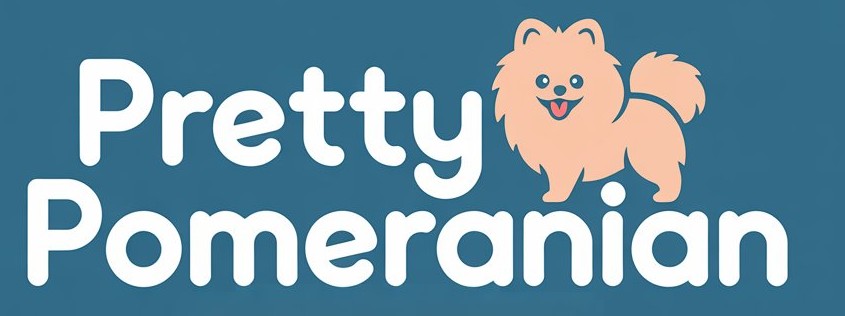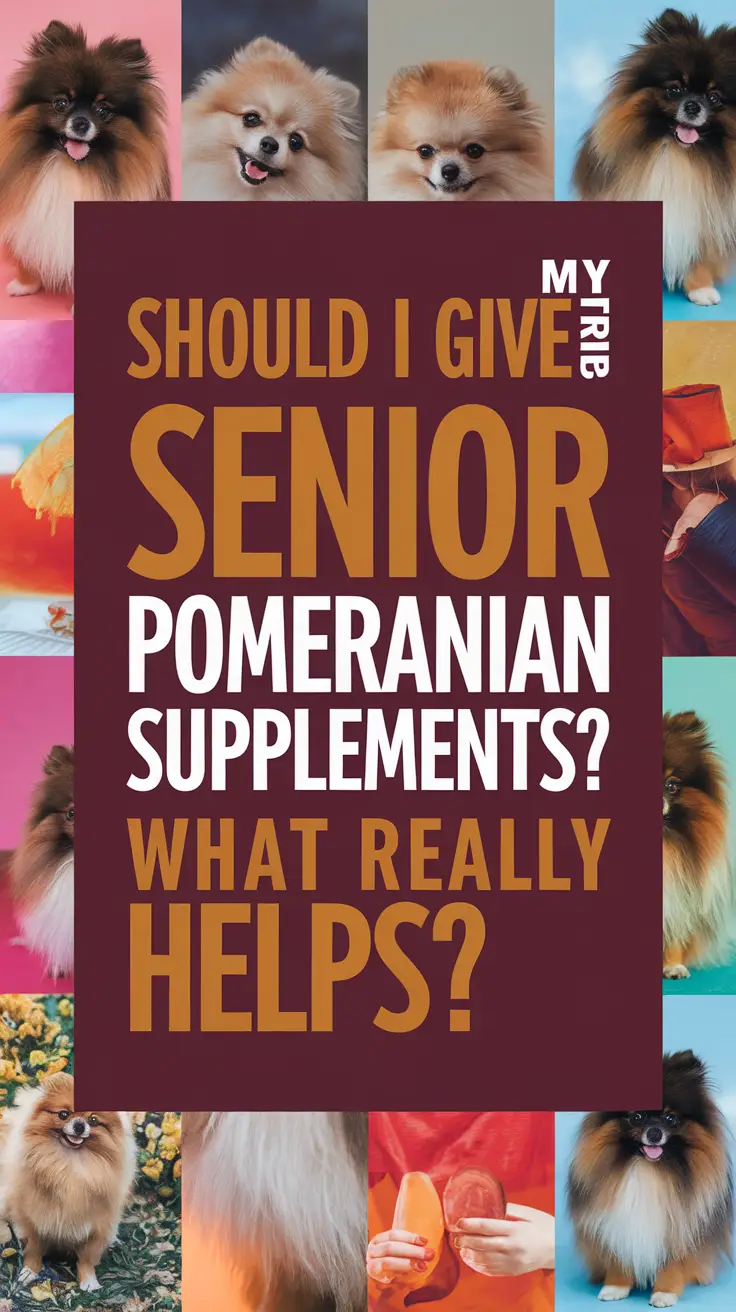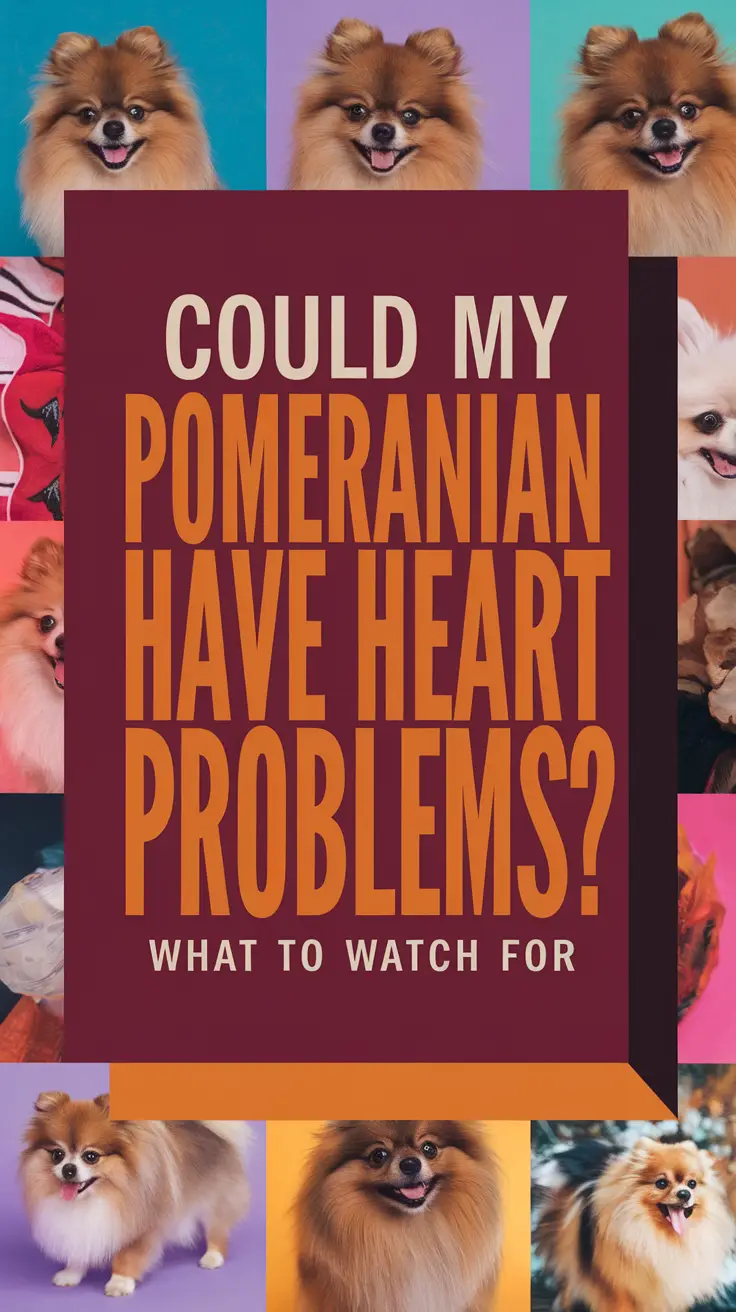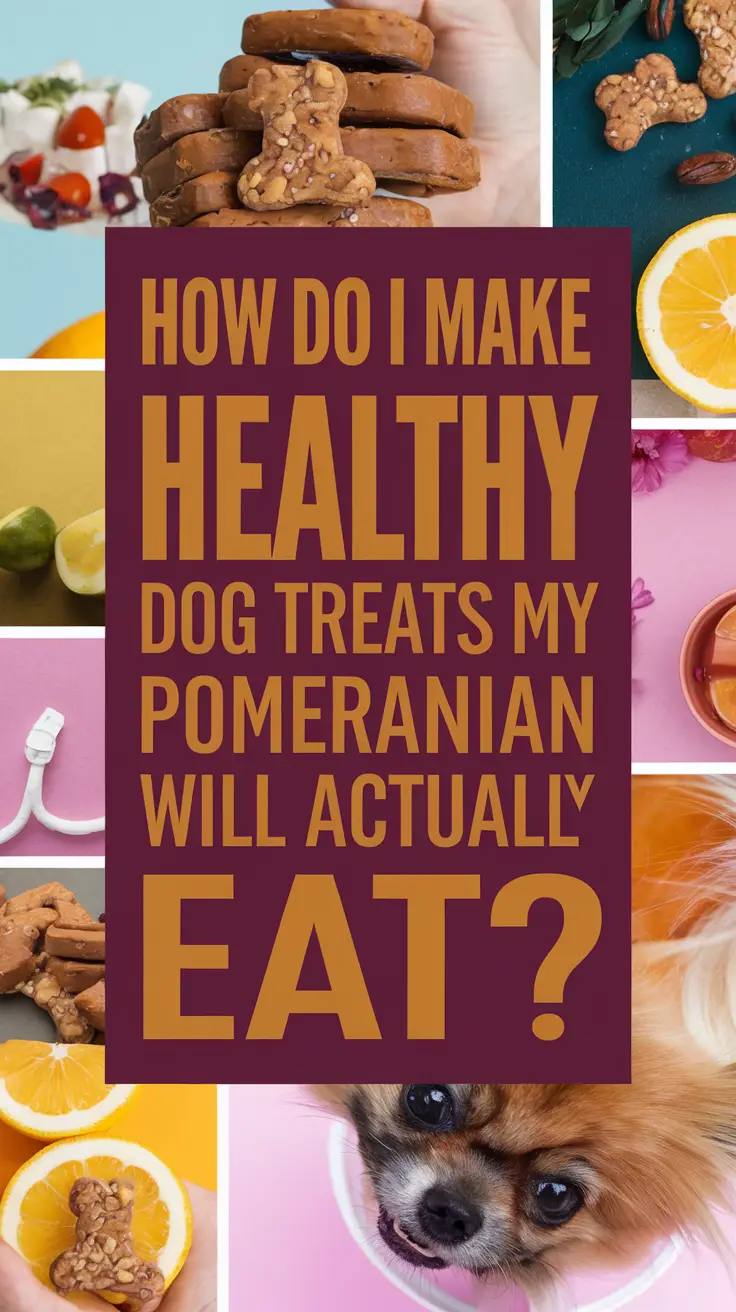Hey there! Your Pom's fluffy double coat means you'll be buddying up with fur all year long, with the biggest fur parties happening in spring and fall.
You'll want to grab your slicker brush and undercoat rake for some quality bonding time 3-4 times a week – trust me, it's worth it to keep that fluff under control!
Feed your little fuzzball plenty of protein and omega fatty acids, and don't skip those grooming appointments every 6-8 weeks.
Look, you can't stop your Pom from doing their natural shedding thing, but you can totally keep it in check with some regular TLC, good food, and the right grooming moves.
Ready to turn your little walking cotton ball into a more manageable furry friend? Let's get to it!
Understanding the Double Coat
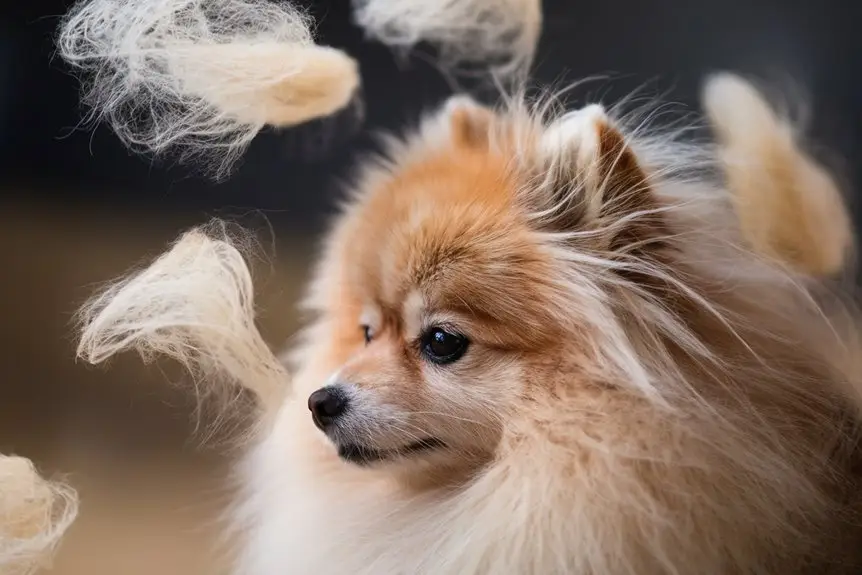
The awesome thing about Poms is their double coat – they've got two different layers of fur that each do their own thing. Think of the undercoat as their built-in temperature control system, keeping them comfy whether it's hot or cold outside. The longer outer fur works like a raincoat, protecting them from wet weather and snow.
Your Pom will shed all year long, but get ready for fur everywhere during spring and fall when they're switching up their seasonal coats. Even that fancy, fluffy tail of theirs joins in on the shedding party! Yeah, shedding might be a pain, but it's totally normal and keeps your pup's coat healthy. Just keep in mind that since Poms have that double coat, they're gonna shed more than dogs with just one layer of fur. It's just their way of dealing with the changing seasons and keeping their fur in top shape! Artificial lighting and heating in your home can actually throw off your Pom's natural shedding patterns.
Natural Shedding Cycles Explained
Hey, let's talk about those double coats and when your Pom drops fur all over the place! Your fluffy buddy will shed year-round, but there are two main times when it gets really hairy – spring and fall. In spring, your little fluffball dumps that thick winter coat to get ready for the hot months. Come fall, they ditch their summer fur to grow a cozy winter coat instead.
If you've got heating and artificial lights at home, don't be surprised if your Pom's shedding gets a bit weird. These modern home comforts can mess with their natural body clock. Every Pom's different too – some shed more than others depending on their genes, how healthy they are, and what they eat. Keep an eye on your pup's shedding patterns and you'll get better at dealing with those extra-fuzzy times of the year! Regular grooming with proper tools can help manage the dense outer coat and delicate undercoat that make up your Pomeranian's signature double-layer fur.
Managing Seasonal Coat Changes
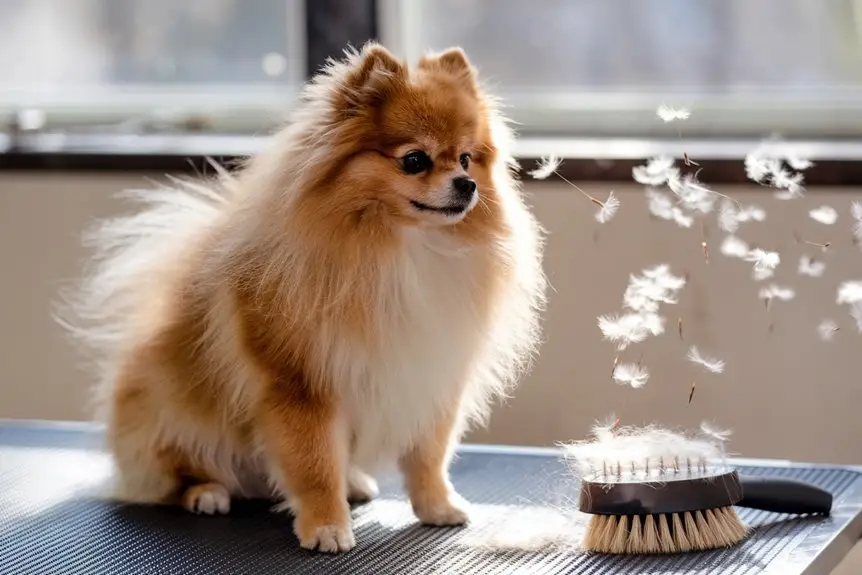
Hey, dealing with seasonal coat changes in Poms can be a real handful, but there's a way to handle it that keeps your buddy comfy and stops your house from turning into a fur factory. When you start seeing more fur flying around during spring and fall, you'll want to bump up your brushing game to about 3-4 times a week with an undercoat rake. Getting that loose fur out before it ends up all over your furniture is the way to go.
While your Pom's shedding like crazy, stick to giving them a bath every 4-6 weeks – no more than that, or you might mess with their skin. Also, try to keep your house temp steady since cranking up the heat can throw off their natural shedding cycle. If you notice your pup's losing way more fur than usual during these times, it's best to check with your vet – could be allergies or hormone stuff going on. Using a Furminator de-shedding tool during grooming sessions can help remove loose undercoat fur more effectively while promoting healthier skin.
Essential Grooming Tools
Getting your Pom looking great means having the right tools ready to go. You'll want to grab a good slicker brush – it's perfect for getting rid of loose fur and stopping knots from forming in that fluffy outer coat. And don't skip the undercoat rake – it's a must-have for reaching deep into your pup's thick bottom layer.
Make sure you've got a metal comb too – it helps catch any sneaky tangles the brush might miss. A pin brush is super handy for the finishing touches and keeping that signature Pom fluff looking amazing. For bath time, pick up some gentle dog shampoo and get yourself a blow dryer that lets you control the heat. Keep some grooming scissors around for quick trims, and throw in some detangling spray – trust me, it makes brushing way easier for both you and your furry friend. Regular grooming sessions with an oatmeal shampoo formula can help maintain coat health without irritating your Pomeranian's sensitive skin.
Diet Impact on Coat Health
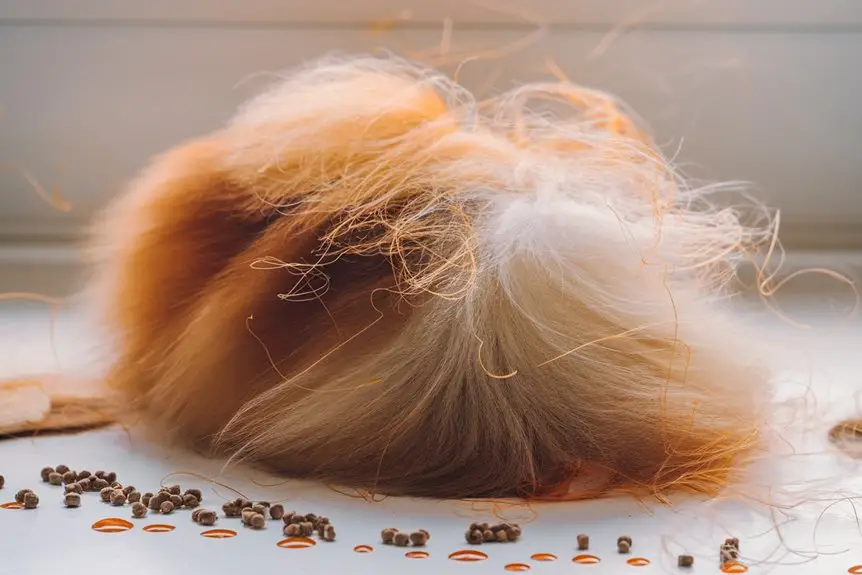
A good diet does wonders for your Pom's fluffy double coat! Your furry friend needs plenty of protein and those important omega-3 and omega-6 fatty acids to keep their fur looking amazing and stop it from falling out too much. Feed them quality food packed with these nutrients, and you'll see how much better their coat looks.
When your Pom isn't eating right, their fur will tell you – more hair everywhere, a dull-looking coat, and hair that breaks easily. Make sure they drink enough water too, since it's super important for healthy skin and fur. Keep an eye out for any food allergies that might make them shed like crazy or get itchy skin. Not sure what to feed them? Just ask your vet – they'll help you figure out the perfect diet to keep your Pom's coat looking gorgeous and stop all that extra shedding. Adding low-calorie fruits and vegetables to their diet can provide essential vitamins and minerals that promote healthier skin and coat while preventing excess weight gain.
Environmental Stress and Shedding
Environmental stress can really make your Pom shed like crazy! If you've spotted more fur than usual around your house, your furry friend might be feeling anxious about something in their surroundings. Sure, some shedding is totally normal, but when your pup gets stressed out, it can mess with their natural fur cycle and cause them to lose more hair than usual.
Here's what might be bugging your Pom and making them shed more:
- Super loud noises like construction work or scary thunder
- Big changes at home, like getting another pet or having someone new move in
- Switching up their daily schedule or moving to a different place
- Getting worried when you're gone for a long time
Try to spot what's stressing out your pup and fix it if you can. When your Pom feels relaxed and has a steady routine, their shedding usually gets back to normal. Taking them on walks and keeping them busy with fun activities can also help stop stress-related fur loss. Using gradual desensitization training can help your Pom become more resilient to environmental stressors that trigger excessive shedding.
Effective Home Cleaning Strategies
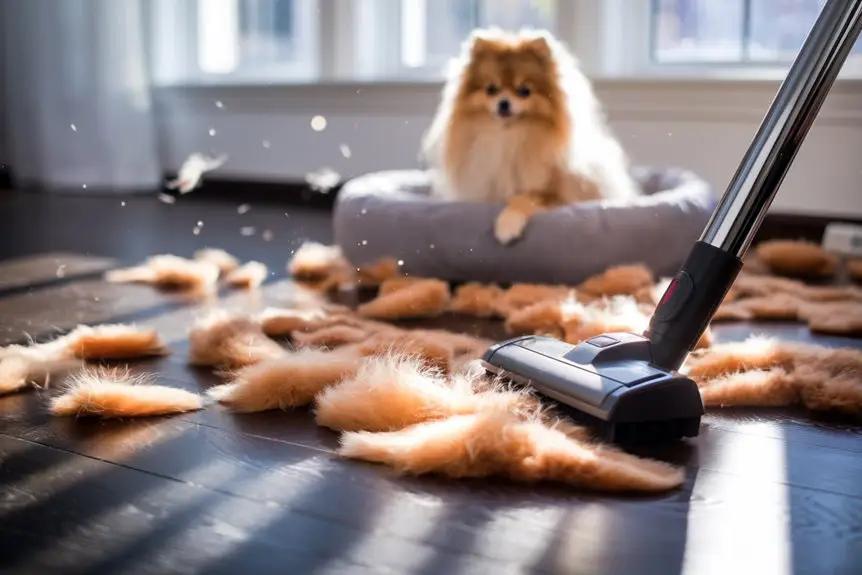
Hey, if you've got a Pom at home, you know the deal – fur gets everywhere! You'll want to vacuum like crazy, pretty much every day, or that fluff will take over your floors and carpets. Grab some lint rollers and stash them all around the house – trust me, you'll need them for quick cleanups on your clothes and furniture.
Make your life easier by throwing some washable covers on your couch and chairs – they're super easy to toss in the laundry when they get furry. A robot vacuum that empties itself is a total game-changer, helping you keep the floors clean while you're busy doing other stuff. Oh, and don't forget to wash your pup's bed and toys every week, or the fur will pile up like crazy. Just stick to a regular cleaning routine with all this stuff, and you won't get buried in Pom fluff! Having two sets of bedding allows you to maintain freshness while one set is being washed, preventing odor buildup in your Pom's sleeping area.
Professional Grooming Benefits
Professional grooming is super helpful for your Pom, going way beyond what you can do at home. These pros really know their stuff when it comes to working with double-coated dogs, and they can catch any skin problems before they get bad. They've got all the right tools and know exactly how to handle your pup's shedding while keeping their fur healthy.
- Groomers can get way deeper into that undercoat than you probably can at home
- They'll spot any skin issues, tangled fur, or other problems right away
- You'll get great tips on how to take care of your Pom's fur between visits
- They know special tricks and treatments that help cut down on shedding
Taking your Pom to the groomer every 6-8 weeks, along with your regular brushing at home, will keep your furry friend looking amazing and feeling great. Regular professional grooming can help prevent luxating patella issues since groomers can identify early signs of joint problems during their thorough examinations.
Frequently Asked Questions
Can Pomeranians Be Shaved to Reduce Shedding?
Hey, no way should you shave your Pom! It's a really bad idea – you'll wreck their protective double coat, throw off their body temperature control, and you won't even fix the shedding problem. Just grab a brush and keep up with regular grooming to keep their fur in check.
Do Mixed-Breed Pomeranians Shed Less Than Purebred Ones?
Mixed-breed Poms aren't guaranteed to shed less – it's really all about what other dog breed is in the mix and what kind of fur they got from both parents. Whether you've got a purebred or mixed Pom, if they end up with that fluffy double coat, they're gonna shed like crazy when the seasons change. It's just how it works!
At What Age Do Pomeranian Puppies Start Their First Major Shed?
Your little Pom will start dropping their fluffy puppy fur when they hit around 4-6 months old – it's their first big shed! During this time, which takes a few weeks, you'll see their baby fluff falling out as their grown-up double coat starts coming in. It's totally normal, so don't worry if you find more fur than usual during this stage.
Can Indoor Pomeranians Adapt to Outdoor Living Despite Their Shedding Patterns?
Your Pom isn't cut out for living outside – they're total indoor pups! Even though they've got that fluffy double coat, they just can't handle harsh weather. These little guys need to stay inside where they can keep their body temperature just right. It's better for them to be cozy in your home than trying to rough it outdoors.
Does Spaying or Neutering Affect a Pomeranian's Shedding Frequency?
You'll find that fixing your Pom won't make a huge difference in how much they shed. Sure, their hormones might shake things up for a bit right after surgery, but they'll still drop their fluff just like before – both during seasonal changes and all year round with that fluffy double coat of theirs.
